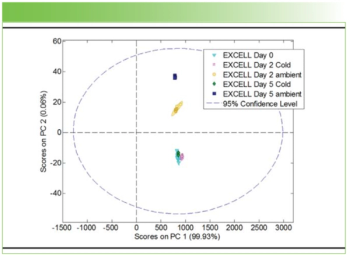
Breakthroughs in Brain Research: Surface-Enhanced Raman Spectroscopy Paves the Way
Surface-enhanced Raman spectroscopy (SERS) is emerging as a powerful tool in brain research, offering enhanced sensitivity and stability over traditional methods. This technique promises to revolutionize the diagnosis and understanding of brain disorders, such as Alzheimer's and Parkinson's diseases, by providing rapid, reliable, and non-invasive diagnostic capabilities.
With brain and central nervous system disorders posing significant global health challenges, particularly in low- and middle-income countries, the need for innovative diagnostic tools has never been greater. Neurological conditions are leading causes of disability and death, exacerbated by an aging population. Surface-enhanced Raman spectroscopy (SERS) is now at the forefront of research, offering new hope for early and accurate diagnosis of brain diseases (1).
Read More:
SERS has emerged as a potent analytical technique with significant potential in brain research, as outlined by researchers Suzan Elsheikh, Nathan P. Coles, Ojodomo J. Achadu, Panagiota S. Filippou, and Ahmad A. Khundakar from the National Horizons Centre at Teesside University and Newcastle University. Their comprehensive review, published in Biosensors, explores the transformative applications and innovations of SERS in understanding the pathophysiological basis and diagnosis of brain disorders (1,2).
Innovations in Diagnostic Technology
Traditional Raman spectroscopy (RS) offers a label-free method to provide a molecular signature of biological samples, useful in diagnosing various diseases. However, RS has limitations, including low signal intensity and sensitivity. SERS addresses these issues by enhancing the scattering signal and quenching fluorescence, enabling high-resolution data acquisition. The integration of SERS with advanced computational methods, such as machine learning, promises significant advancements in non-invasive, rapid, and reliable diagnostics (1).
Applications in Neurological Disorders
The review highlights the potential of SERS in diagnosing brain disorders such as Alzheimer's and Parkinson's diseases, stroke, and brain cancer. By enhancing the sensitivity and accuracy of diagnostic processes, SERS allows for the detection of subtle biomolecular changes. This capability is particularly useful in distinguishing between cancerous and non-cancerous tissues and between different stages of disease. Recent technological advancements, including innovations in nanoparticle design, substrate materials, and imaging technologies, further enhance the effectiveness of SERS (1).
Intraoperative Applications and Future Prospects
SERS also shows promise in intraoperative procedures, particularly in guiding brain tumor surgeries. The ability to provide real-time, high-resolution molecular information can significantly improve surgical outcomes. Additionally, the technique's potential in detecting neurotransmitters offers new avenues for understanding brain function and pathology (1).
The emergence of portable SERS devices represents a significant step forward, enabling point-of-care diagnostic testing. These devices can provide spectral measurements within minutes, making them highly practical for clinical use. Moreover, the integration of machine and deep learning with SERS data processing has already demonstrated accurate discrimination between malignant glioma grades, highlighting its potential in cancer diagnostics (1).
Challenges and Limitations
Despite its potential, SERS faces challenges, including the need for further advancements in portable device technology and the complexity of big data processing. Addressing these issues will be crucial for the widespread clinical adoption of SERS. Nevertheless, the current trajectory of research and technological development suggests a promising future for this technique in brain research (1).
Conclusion
SERS holds considerable promise for advancing brain research. Its ability to provide deeper insights into neurodegenerative disease pathology, neurotransmitter measurement, and brain tumor monitoring opens exciting prospects for improving clinical diagnostics and understanding brain-related processes. As portable SERS devices and integrated machine learning approaches continue to evolve, the technique is poised to make significant contributions to the field of neuropathology (1,2).
References
(1) Elsheikh, S.; Coles, N. P.; Achadu, O. J.; Filippou, P. S.; Khundakar, A. A. Advancing Brain Research through Surface-Enhanced Raman Spectroscopy (SERS): Current Applications and Future Prospects. Biosensors, 14 (1), 33. DOI:
(2) Straehle, J.; Erny, D.; Neidert, N.; et al. Neuropathological interpretation of stimulated Raman histology images of brain and spine tumors: part B. Neurosurg Rev 2022, 45, 1721–1729.
Newsletter
Get essential updates on the latest spectroscopy technologies, regulatory standards, and best practices—subscribe today to Spectroscopy.




